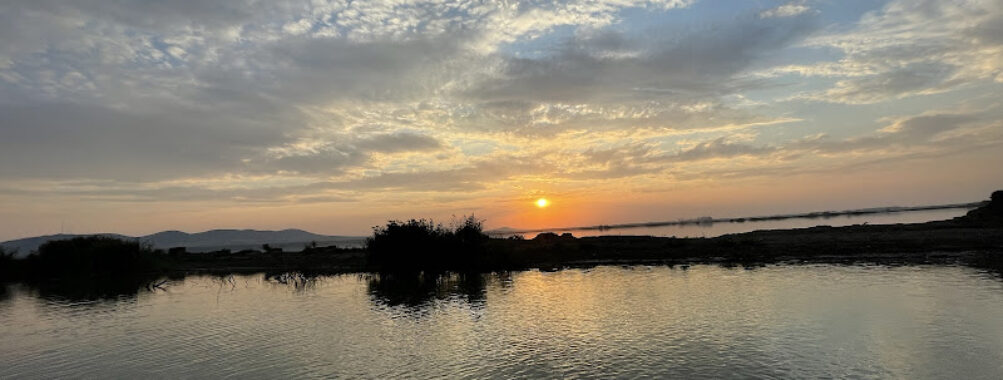
Danube Delta
Table of Contents
Description
The Danube Delta stands as Europe’s largest wetland ecosystem and one of the continent’s most remarkable natural treasures. As I discovered during my visits, this UNESCO World Heritage site is an intricate maze of waterways, reed beds, and floating islands where the mighty Danube River meets the Black Sea. You’ll find yourself surrounded by a stunning mosaic of ecosystems – from pristine beaches and sand dunes to forests and marshlands.
What truly sets this place apart is its incredible biodiversity. I remember being absolutely amazed by the sheer number of bird species – over 300 different kinds call this place home at various times of the year. The delta’s also one of the last refuges in Europe where you can spot wild pelicans and cormorants in their natural habitat. And let me tell you, watching a flock of pelicans take flight at sunset is something that’ll stay with you forever.
Key Features
• The most extensive reed bed system worldwide, creating a unique floating landscape
• Home to over 5,500 species of flora and fauna, including rare sturgeon species
• More than 300 bird species, making it a paradise for birdwatching enthusiasts
• Traditional fishing villages where time seems to stand still
• Unique ecosystem where freshwater meets saltwater, creating diverse habitats
• Letea Forest, Europe’s northernmost subtropical forest with wild horses
• Countless channels and lakes perfect for kayaking and boat tours
• Rich cultural heritage of local communities, including Lipovan Russians
Best Time to Visit
Having been here during different seasons, I can tell you that each brings its own magic to the Delta. Spring (April-May) is absolutely incredible for birdwatching – that’s when migratory birds return and the wetlands burst with life. Plus, the weather’s pretty perfect for outdoor activities.
Summer (June-August) brings warm, sunny days ideal for boat trips and swimming, but I gotta warn you – it can get pretty hot and crowded. The mosquitoes can be a real pain too, so pack that repellent!
Fall (September-October) is my personal favorite. The tourist crowds thin out, temperatures become more pleasant, and the changing colors of the vegetation create stunning photo opportunities. Winter’s fascinating in its own right, but many tourist facilities close down, and boat access becomes limited.
How to Get There
The main gateway to the Danube Delta is Tulcea, a city that serves as the jumping-off point for most delta explorations. You can reach Tulcea several ways:
By air: The closest airport is Tulcea’s Delta Dunării Airport, though most international travelers fly into Bucharest or Constanta and continue from there.
By train: Regular services connect Bucharest to Tulcea, though the journey takes about 4-5 hours. The trains aren’t exactly luxury experiences, but they’re reliable and give you a chance to see the Romanian countryside.
By car: If you’re driving, the route from Bucharest takes about 4 hours on relatively well-maintained roads. But remember – once you’re in the Delta, you’ll need to switch to boats!
Tips for Visiting
After several trips to the Delta, I’ve learned a few things that might make your visit smoother. First off, book your accommodation and boat tours in advance, especially during peak season. The good spots fill up fast!
Always bring mosquito repellent – trust me on this one. I learned the hard way during my first visit. Pack a good camera with a zoom lens for wildlife photography, and don’t forget binoculars if you’re into birdwatching.
Consider staying in one of the traditional villages like Sfântu Gheorghe or Sulina instead of just doing a day trip. You’ll get a much better feel for the Delta’s unique way of life. The locals are incredibly welcoming, and the fresh fish dishes they prepare are out of this world.
Hiring a local guide is worth every penny. They know all the hidden channels and best spots for wildlife viewing. Plus, they can share fascinating stories about the Delta’s history and culture that you won’t find in any guidebook.
Remember that you’re visiting a protected area, so follow the leave-no-trace principles. And yeah, the Delta operates on its own time – things move slower here, but that’s part of its charm. Take it easy, go with the flow, and let the natural rhythm of the wetlands guide your experience.
And one last thing – keep some flexibility in your schedule. Weather conditions can affect boat trips, and sometimes the best experiences come from unexpected detours down quiet channels or spontaneous stops in tiny fishing villages.
Location
Places to Stay Near Danube Delta
Find and Book a Tour
Explore More Travel Guides
No reviews found! Be the first to review!